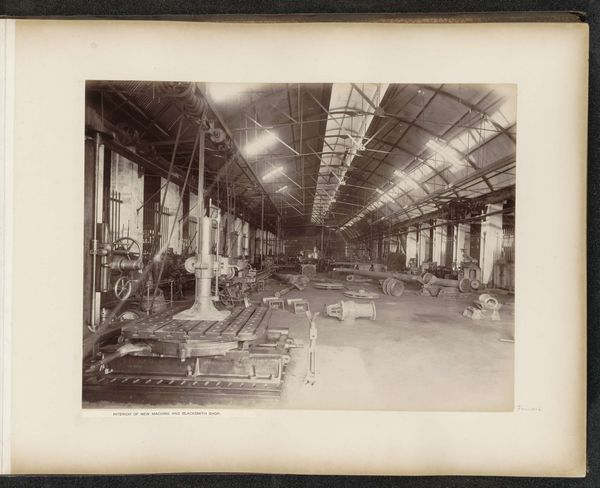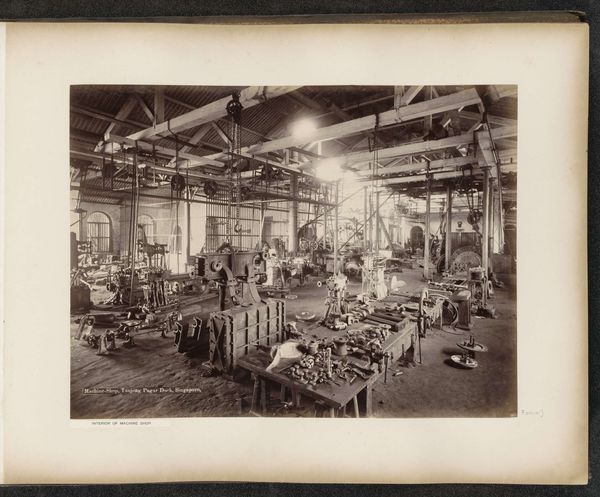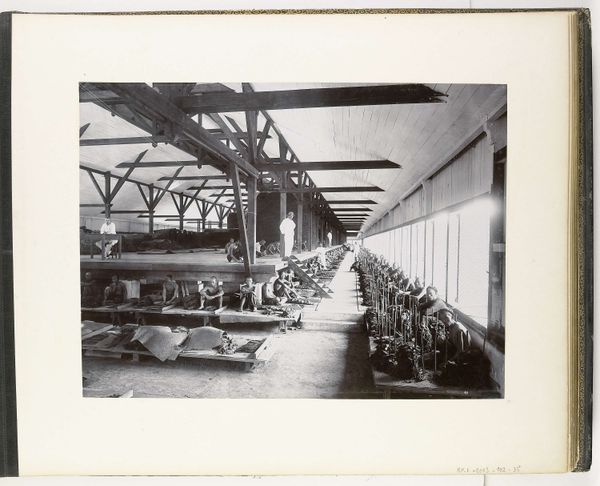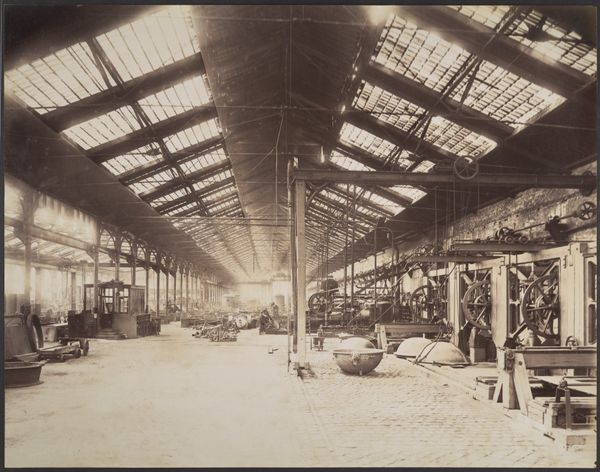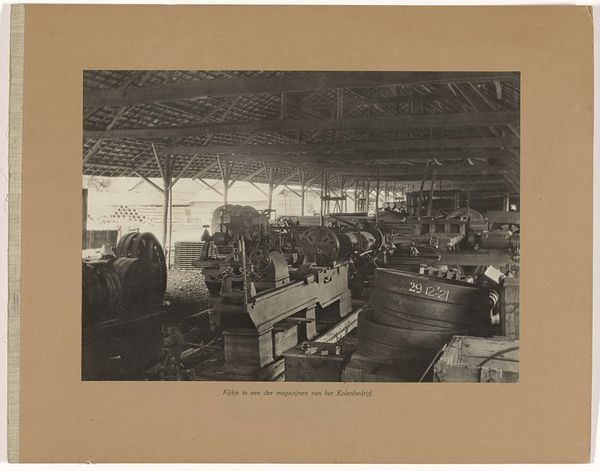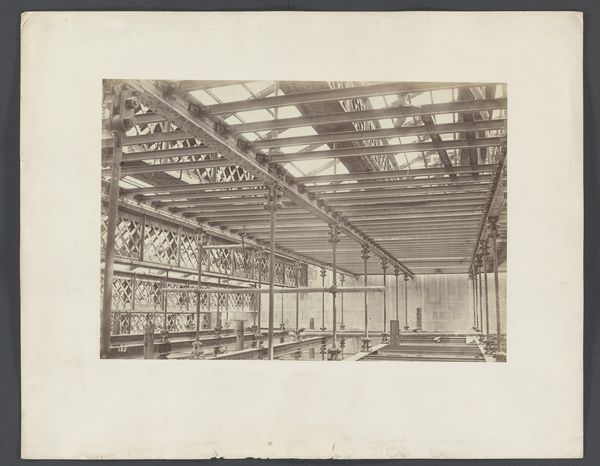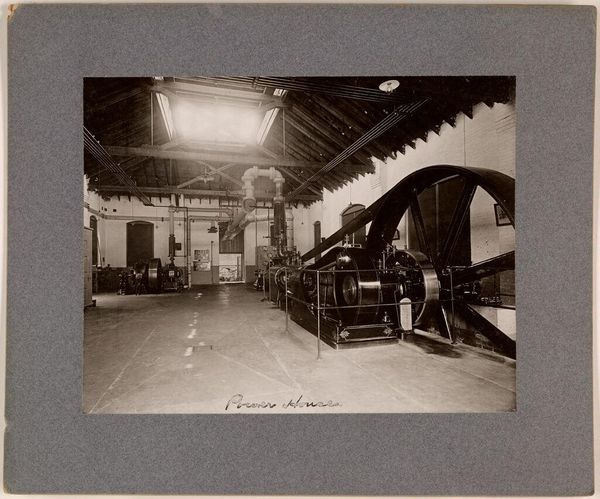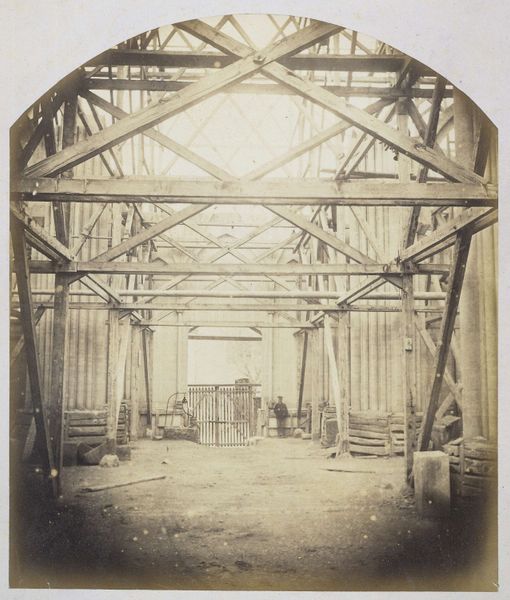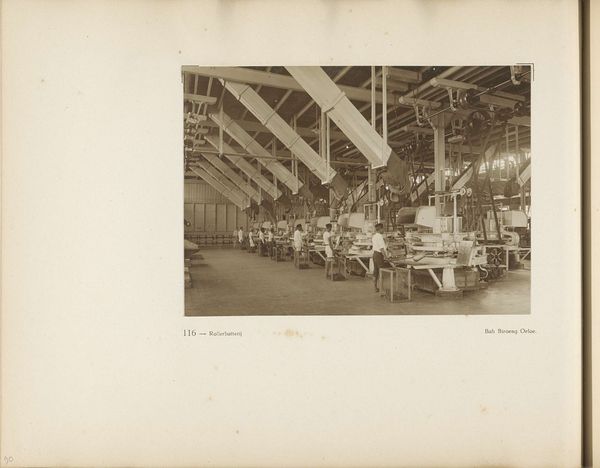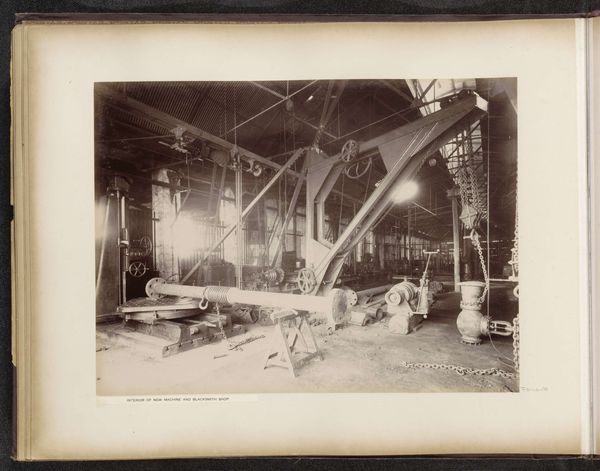
Interieur van het nieuwe machinehuis met smederij van de Tanjong Pagar Dock Co. Ltd. in Singapore before 1905
0:00
0:00
photography
#
still-life-photography
#
photography
#
realism
Dimensions: height 265 mm, width 368 mm
Copyright: Rijks Museum: Open Domain
Editor: Here we have a photograph entitled "Interior of the new machine house with smithery of the Tanjong Pagar Dock Co. Ltd. in Singapore," attributed to G.R. Lambert & Co., pre-1905. It's striking how this industrial space is captured; the sharp details give an unvarnished look at early 20th-century industry. What strikes you about this image? Curator: The photograph presents a fascinating glimpse into the machinery of empire. Think about it: Tanjong Pagar Dock Company was pivotal in Singapore’s transformation into a global port. This isn't just a snapshot of a factory; it’s a visual document reflecting the complex socio-economic and technological forces at play. Editor: Socio-economic forces? How so? Curator: The image highlights the shift from manual labor to mechanization and all the social issues tied to industrial advancement: class, labor rights, and even colonial governance. How are those machines impacting not only global trade routes, but people’s everyday life and work? Editor: It makes you think about whose labor built this space, the resources shipped in. And what was life like for the workers in that period? Curator: Exactly. This photograph, beyond its aesthetic value, opens a window onto critical questions about progress, power, and representation during the age of empire. How do you interpret the space itself—does it feel ordered and controlled, or chaotic? Editor: I see both. The building has an ordered structure, but the machine parts scattered on the ground give a sense of ongoing work, of things constantly being built and disassembled. It is definitely less of a finished still life than I first assumed. Curator: The photographic image itself is never "neutral"; it also represents the social and political intention and how G.R. Lambert wanted to frame Singapore at this moment. I think this sheds light on photography's public role in shaping perception. Editor: This makes me rethink about seemingly objective representations. I initially focused on composition and texture, but now understand this artwork in a broader context. Curator: And I’m left contemplating the artist’s choices to invite further inquiry into Singapore’s past through the intersection of technological advancements, labor and artistic representation.
Comments
No comments
Be the first to comment and join the conversation on the ultimate creative platform.
